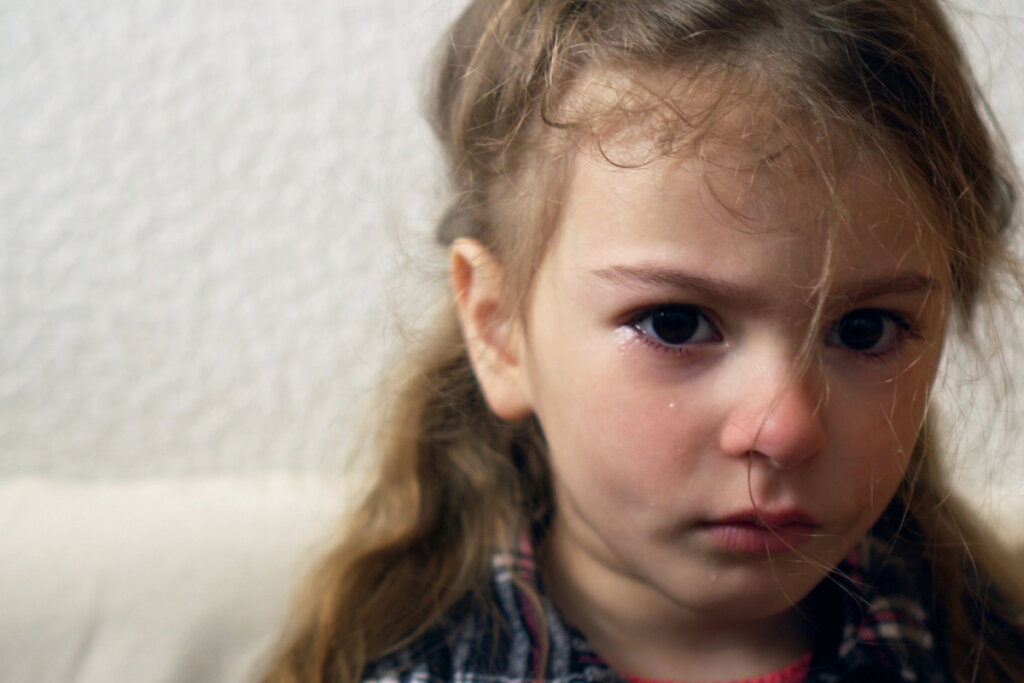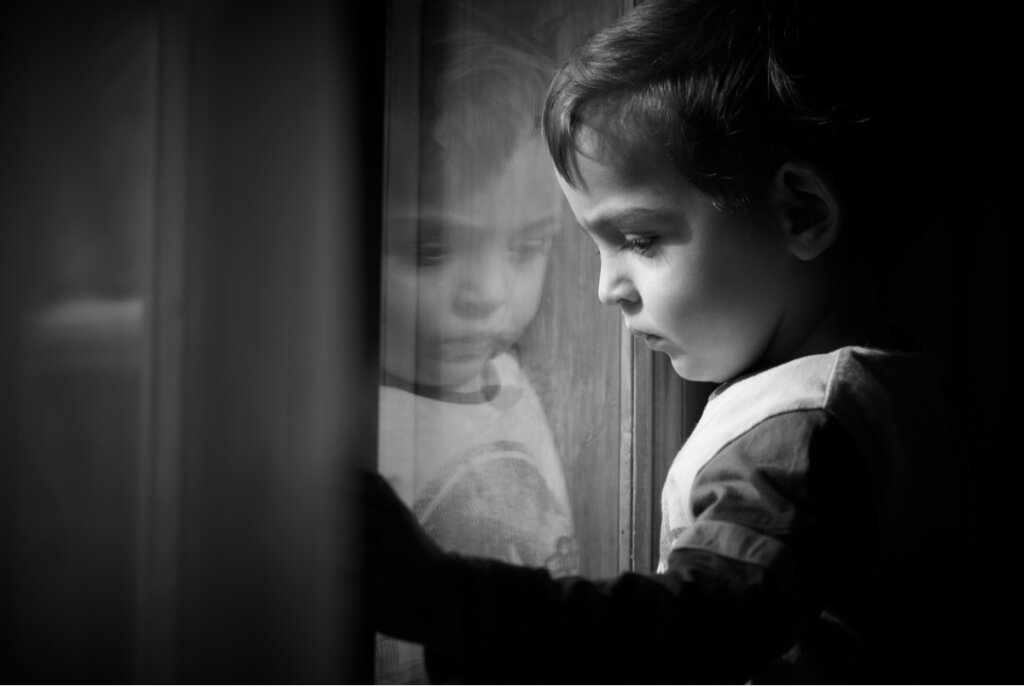The Five Archetypes of Childhood Trauma


Written and verified by the psychologist Valeria Sabater
The five archetypes of childhood trauma define the different ways in which children manifest the impact of their suffering. Because not everyone shows it in the same way. Indeed, not all will reach adulthood having developed the same behavioral and psychological dynamics. That’s because the wounds left by mistreatment, abandonment, or abuse always manifest themselves in very particular ways.
Carl Jung spoke of the archetype of the wounded child. Later, Jungian psychologists who were charged with keeping his legacy and the foundations of analytical psychology alive mapped out the various types of trauma and their archetypal symbolism. They consist of a series of universal archaic patterns and images that outline different ways of handling injuries in the psychic universe.
In this way, as Jung himself explained, it’s the archetype of the child that’s the first to appear in our unconscious. However, that early imprint isn’t always as healthy and enriching as it should be.
The process of this psycho-emotional ‘imprinting’ begins from when we’re in the womb up until we’re around seven years old. This period is key in the development of the human being. Therefore, in the event of trauma at this time, the self becomes completely fragmented.
Understanding the archetypes of childhood trauma can allow us to develop better strategies to heal the wounds of the past.

The archetypes of childhood trauma
Donald Kalsched is a Jungian psychoanalyst. He’s written several interesting books on childhood trauma. One of them is The Inner World of Trauma: Archetypal Defences of the Personal Spirit ( 1996). In this work, he explores how early experiences of abuse or mistreatment completely damage the development of the child’s psychic life.
Faced with this pain, what the infantile mind does is try to defend the self. However, in doing this, they tend to create images and defenses that are most certainly malevolent and even destructive. This explains the archetypes of childhood trauma. As a matter of fact, these are essential in the healing and enlightening of the traumatized patient.
Because, as Jung himself pointed out, to overcome these experiences we’re obliged to shine a light on our shadows, fears, and wounds. Therefore, according to Jungians, understanding the archetypes that each child assumes and carries into adult life is one of the first steps to facilitate their liberation and healing.
1. The necessary hero
Within the five archetypes of childhood trauma, the necessary hero is one of the most recognizable. It refers to that child who assumes the role of the adult, taking over responsibilities beyond their age. This is common in dysfunctional families, in those environments where parents are absent or neglect their children.
As a matter of fact, there are many little ones who end up taking care of their younger siblings and even their own parents. These are realities in which their childhood is lost, their identity is distorted, and they always strive to be saviors for everyone except themselves.
2. The jester
The jester uses comedy, irony, and humor to camouflage their wounds. It’s quite often the little brother who becomes this archetype, always showing a certain unconcern, volatility, and immaturity. However, beneath that disguise, there’s a wounded child seeking to mask their pain and loneliness.
3. The substitute
The substitute is another of the archetypes of childhood trauma. At first, this archetype may seem similar to the necessary hero, but in reality, it’s a bit more complex. As a matter of fact, these are incredibly wise and mature children for their age. If there’s one thing that defines them, it’s their responsible and conciliatory character.
These children spend a good deal of time ‘picking up the broken pieces’ of their dysfunctional family. They care about the welfare of their siblings and parents, regardless of whether or not they’re abusers. They long for everything to go well. In fact, they sometimes act as the voice of conscience for their parents or as protectors of their own siblings.
All this has a great psychological and emotional cost on their mind.
4. The wild child
The wild child only craves love, attention, and validation. However, since they don’t have any of these nutrients, they react, and they do so with violence. They’re impulsive, defiant personalities, and they use problems to get attention.
Their defiant behavior feeds back the dynamics of punishment and contempt on the part of parents. This makes the mark of trauma much greater, of suffering that’s built up with sadness, loneliness, and even hatred.
“Until you make the unconscious conscious, it will direct your life and you will call it fate.”
-Carl Jung-

5. The aimless wanderer
The aimless wanderer is the most common, as well as most complex child archetype. It defines the lost child, who wanders through everyday life disconnected from almost everything. They don’t receive affection and neither do they expect it. In fact, they feel that it’s better not to expect anything from anyone so as not to increase their suffering.
They internalize all their emotions and needs. Indeed, they avoid attracting attention and if there’s one thing they desire, it’s to be invisible. Furthermore, they have no purpose. This means they grow up with no hopes and dreams and tend to fall into depressive states and social isolation. This is an extremely harsh psychological reality.
The idea of these archetypes isn’t backed by any real scientific evidence. However, they describe realities that are recognized by all those who deal with childhood trauma.
Some children develop externalizing disorders (such as impulsivity or challenging behavior) while others exhibit internalizing disorders (shyness, depression, phobias). Therefore, this resource from Jungian psychology is extremely interesting for us to understand the different impacts of these early wounds.
All cited sources were thoroughly reviewed by our team to ensure their quality, reliability, currency, and validity. The bibliography of this article was considered reliable and of academic or scientific accuracy.
- van der Kolk, MD, B., & Fisler, EdM, R. (1994). Childhood abuse and neglect and loss of self-regulation — ProQuest. Retrieved 5 February 2021.
- Howard, K., Martin, A., Berlin, L., & Brooks-Gunn, J. (2011). Early mother–child separation, parenting, and child well-being in Early Head Start families. Attachment & Human Development, 13(1), 5–26. doi: 10.1080/14616734.2010.488119
- Kalsched, Daniel (1997) The Inner World of Trauma: Archetypal Defences of the Personal Spirit. Routledge
- Sassenfeld, A.M. (s.f.). El desarrollo humano en la psicología junguiana. Teoría e implicancias clínicas. Universidad de Chile.
This text is provided for informational purposes only and does not replace consultation with a professional. If in doubt, consult your specialist.








